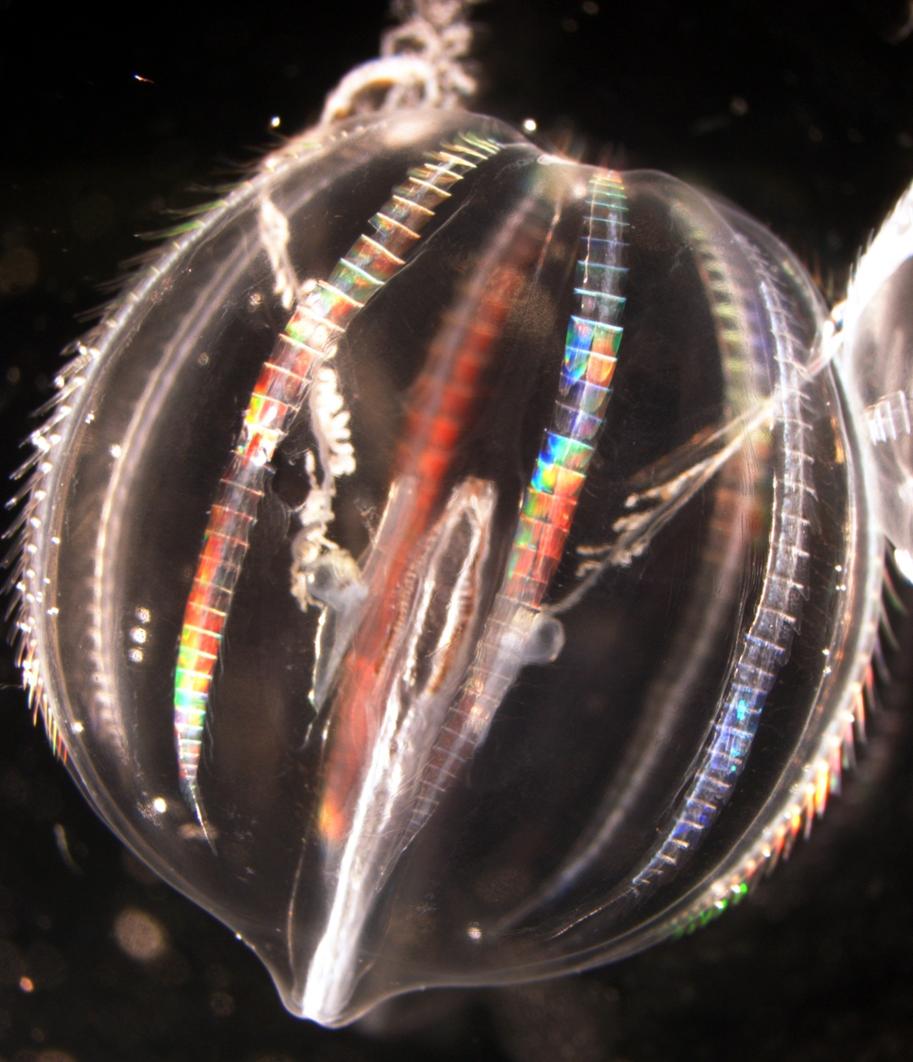COSAM News Articles 2014 May Auburn scientists make ground-breaking discovery in the field of evolutionary study
Auburn scientists make ground-breaking discovery in the field of evolutionary study
For more than a century, researchers have believed that sponges represented the earliest living lineages of the animal tree. Thanks to modern genomic sequencing techniques, scientists in Auburn's College of Sciences and Mathematics discovered that ctenophores, or comb jellies, are actually at the base of the animal kingdom. The research results have been published in the journal Nature and can be read at this link.
"The placement of comb jellies at the base of the animal tree rewrites some of our very basic understanding of how animals first evolved on this planet," said Kenneth Halanych, a professor in the Department of Biological Sciences at Auburn. "The new genomic data overturns 150 years of scientific theories about the early evolution of animals."
Halanych and the team of scientists, including Kevin Kocot, postdoctoral scholar in the Department of Biological Sciences at Auburn, along with an international team of scientists led by Leonid Moroz, Distinguished Professor in the Department of Neuroscience at the University of Florida, have studied the complete genome of a comb jelly, Pleurobrachia bachei, known as the "Pacific sea gooseberry." They were able to show that the species is remarkably distinct from other animals in that the genetic mechanisms used in ctenophore nerves and muscles are different from those seen in other animals.
"There is strong evidence that animal nervous systems, and maybe neurons, have evolved at least twice independently. Nerves are one of the basic features that we associate with most, but not all, animals. The fact that they may have evolved twice holds significant implications about how active life on this planet may have evolved," said Halanych. "This new genomic data suggests that some of our basic understanding about how animals have evolved to respond to their environment is in need of serious revision."
Halanych said the discovery that ctenophores form the base of the animal kingdom lineage, and that nervous and muscular systems may have evolved at least twice, implies that the earliest animals on earth may have been more complex than previously thought.
"Comb jellies, amazingly complex animals, are now understood to be at the base of the animal tree," said Halanych. "This finding rectifies a century of unanswered questions about these beautiful gelatinous animals."
Funding for the research was made possible by a four-year, $810,000 grant from NASA, secured by Halanych, Kocot and Moroz, for research into the evolution of multicellular organisms. The grant is titled, "Elucidating the early evolution of metazoans."
For more information on Halanych, the Stewart W. Schneller Endowed Chair in the College of Sciences and Mathematics at Auburn, visit his website at this link.
Latest Headlines
-
02/12/2025
-
02/11/2025
-
02/10/2025
-
01/30/2025
-
12/03/2024


